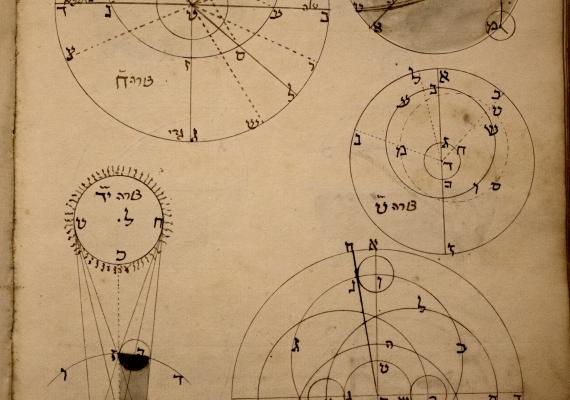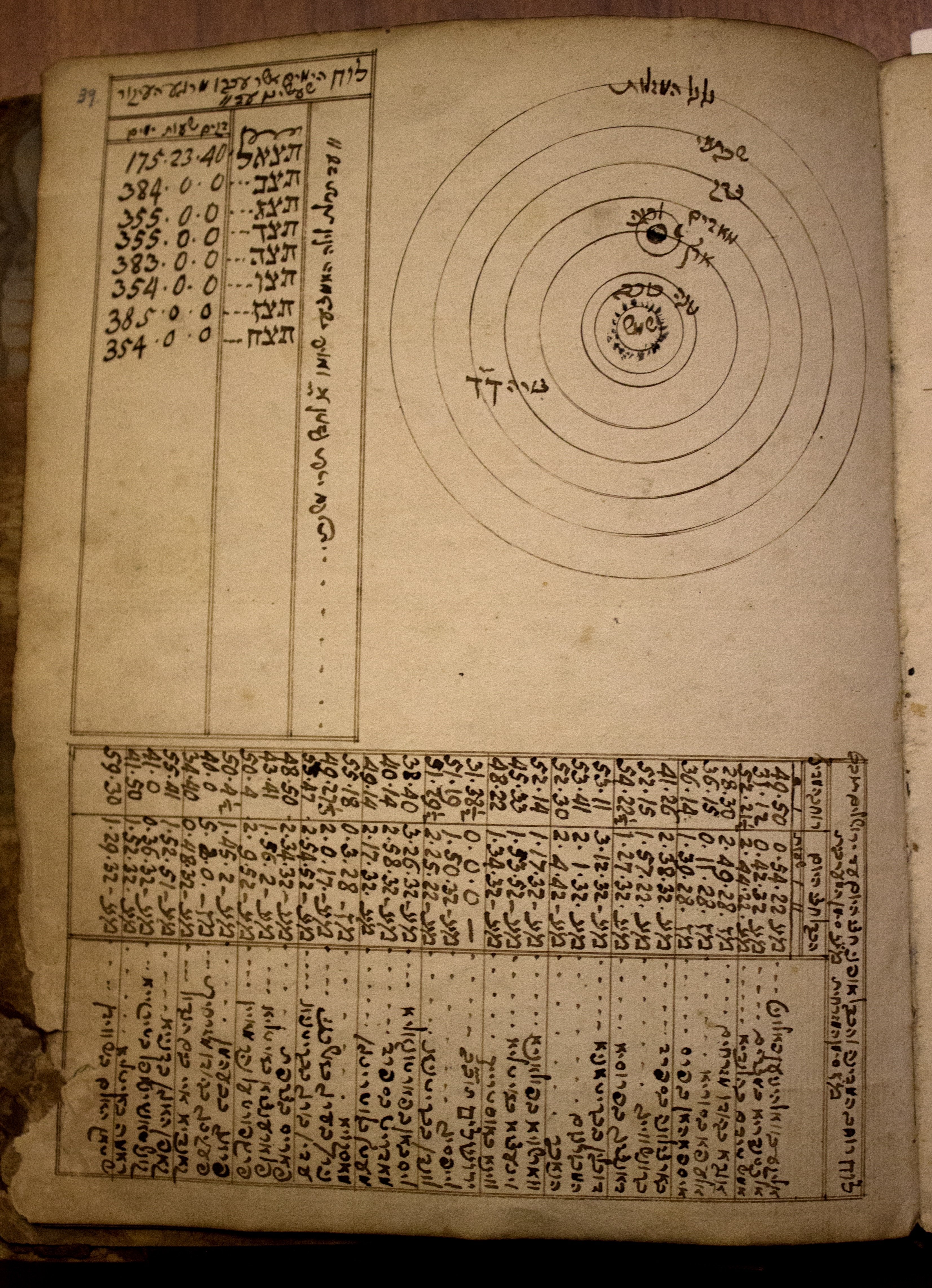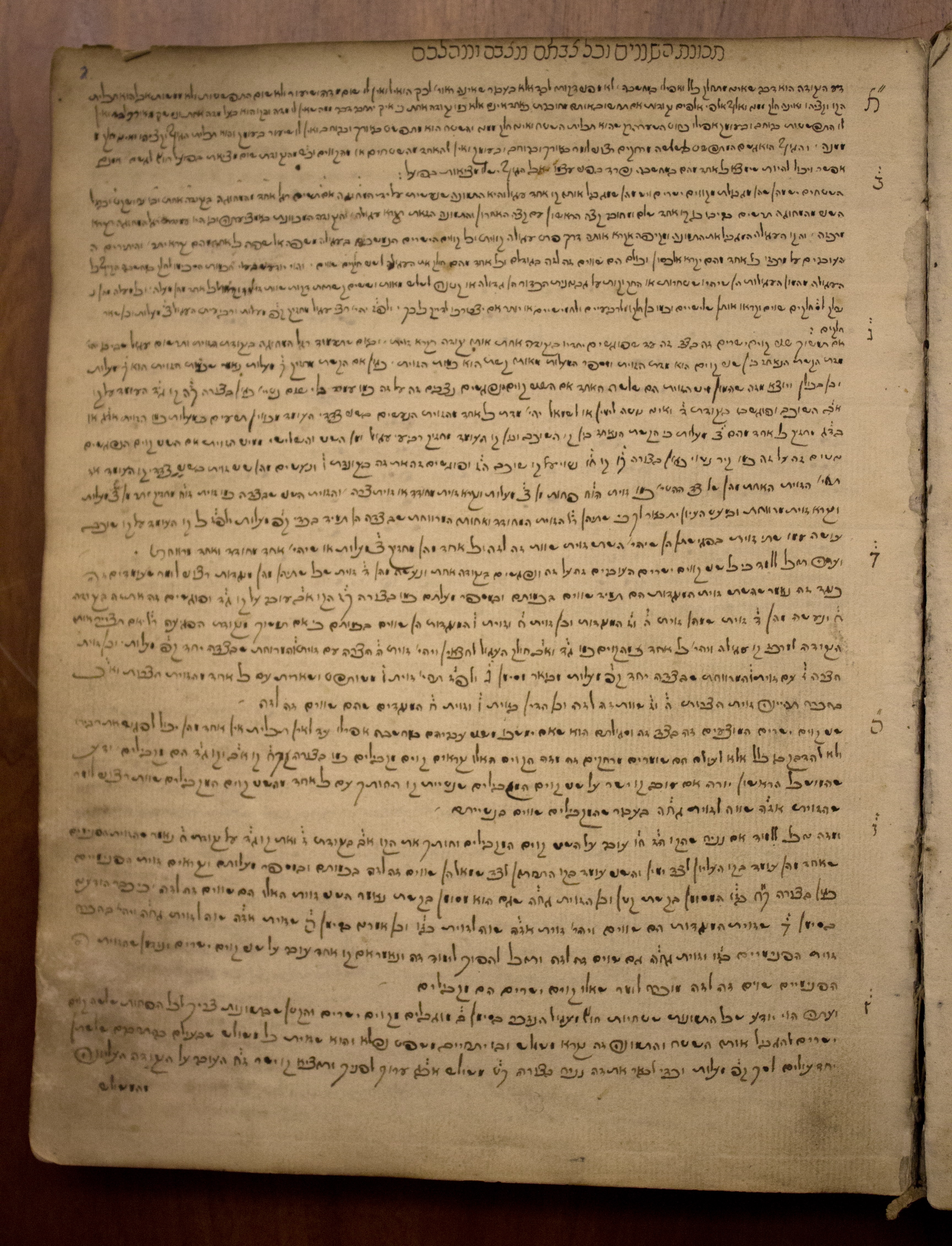Raphael Levi Hannover, First Known Jewish Copernican

It appears that the first clear-cut advocate of the Copernican system among the Jews was an obscure Ashkenazi bookkeeper, Raphael Levi Hannover (1685–1779), and a scientific manuscript of his, Tekhunat ha-shamayim ve-khol tsev‘am, matsavam u-mahalakham, resides at the Library at the Katz Center awaiting full investigation.
By the seventeenth century, some Jews had encountered the paradigm-shifting thesis of Copernicus that the sun rather than the earth is at the center of our piece of the universe. David Gans of Prague (1541–1613) had actual face-to-face contact with the greatest astronomers of his age, Tycho Brahe and Johannes Kepler. While Brahe advocated a sort of hybrid Copernican theory, Kepler was a promoter of full-blown Copernicanism. Gans, however, could not bring himself to abandon the old Ptolemaic system. Jacob Frances Bocarro-Rosales (ca. 1593–1662), a sometime Portuguese converso, was a student of Galileo, one of the great advocates of the new system (though he may have been with Galileo before the latter made the shift to Copernicanism). The Cretan polymath Joseph Solomon Delmedigo (1591–1655) has been credited with being the first Jewish Copernican but there is some lack of clarity about this. Other figures, such as Isaac Cardoso and Tobias ha-Kohen, knew but rejected the Copernican thesis. The same is true of the early eighteenth-century scholars David Nieto and Moses Gentili.

None of this should surprise us. Jews were not the only ones to express skepticism about the radical new world picture. After all, the old earth-centered system made intuitive sense and had been taught for almost two millennia. It continued to be taught in many European universities well into the Enlightenment period. Further research into the Katz Center manuscript is necessary to clarify whether Hannover had indeed accepted the Copernican system by the 1630s. If so, he would be a pioneer in Jewish adoption of new science in the early modern period.
Hannover is little known today to any but a handful of historians of early modern Jewish culture. In 1756 Hannover’s student, Moses Yekutiel of Tiktin, published his notes on Hannover’s lectures concerning astronomy, which include passages about Hannover’s adoption of Copernicanism. Jeremy Brown (New Heavens and New Earth: The Jewish Reception of Copernican Thought [Oxford, 2013], 147–54, with help from David Ruderman) has done excellent work reconstructing Hannover’s role in the history of Jewish astronomical thought, but the full story of his studies is not yet told. The Katz Center’s manuscript contains a significantly different version of Hannover’s astronomical views, and includes a series of illustrations showing the earlier Ptolemaic system with the earth at the center directly across from an illustration of the modern Copernican system with the sun at the center. The work is probably in Hannover’s own hand and has the year “1737” stamped on its cover, suggesting that Hannover may have been a Copernican by the 1730s if not earlier.

One reason that the full story of Hannover's Copernicanism is not fully known is that the Katz Center manuscript, originally belonging to the American Jewish pioneer Isaac Leeser, was long inaccessible. Steven and Henry Schwarzschild noted in a 1984 article that although “the Leeser library was absorbed by the Hebrew Education Association of Philadelphia and ended up in the library of Dropsie University [sic],” they were not able to locate it at that time (“Two Lives in the Jewish Fruhaufklarung: Raphael Levi Hannover and Moses Abraham Wolff” [Leo Baeck Institute Yearbook 29 (1984): 243–4, n. 111]). Now, with the manuscript fully catalogued as CAJS Rar Ms 49 in the Penn Libraries, we are privileged to be able to examine it and consider Hannover’s developing views and the legacy of Jewish Copernicanism.
